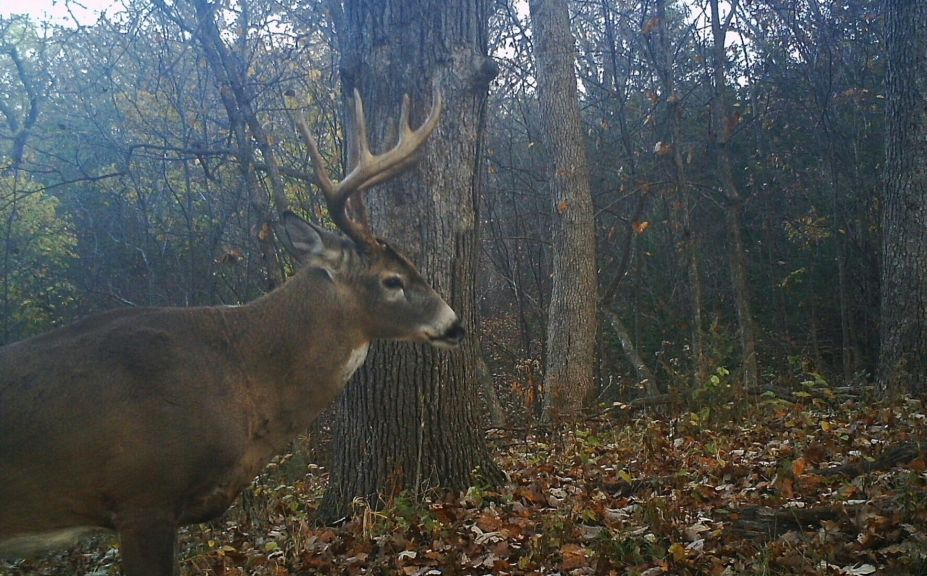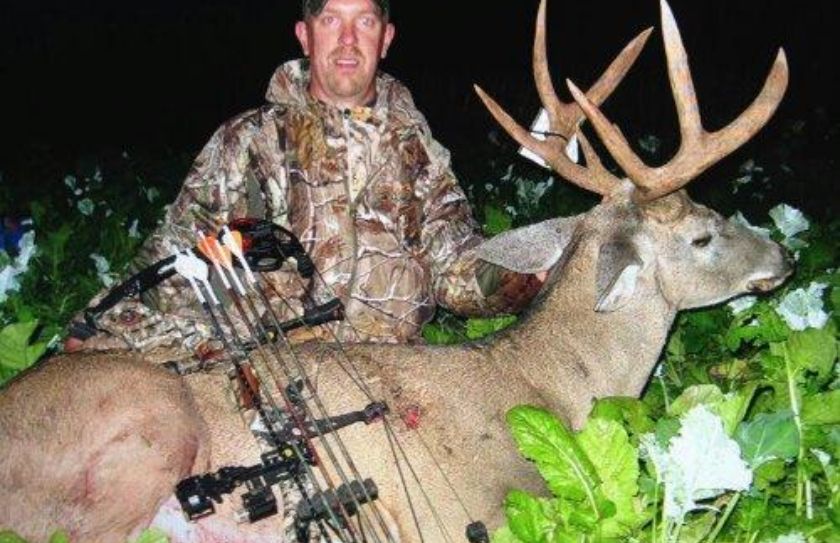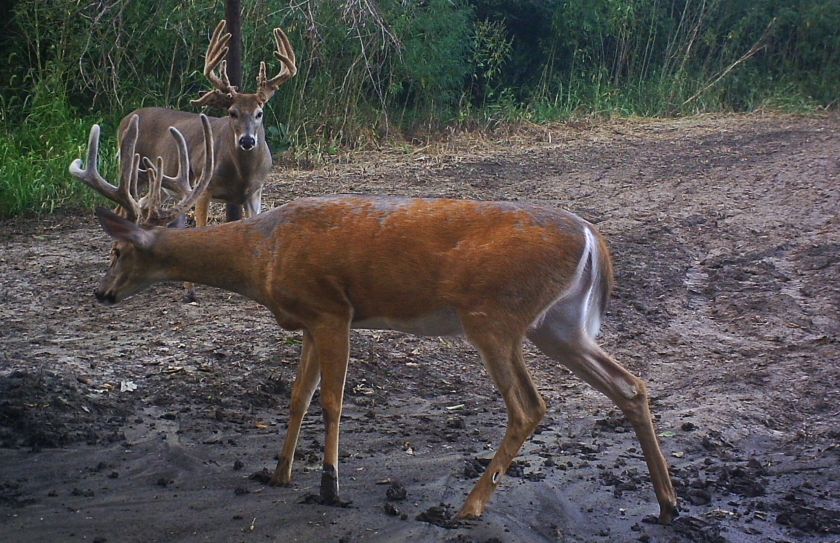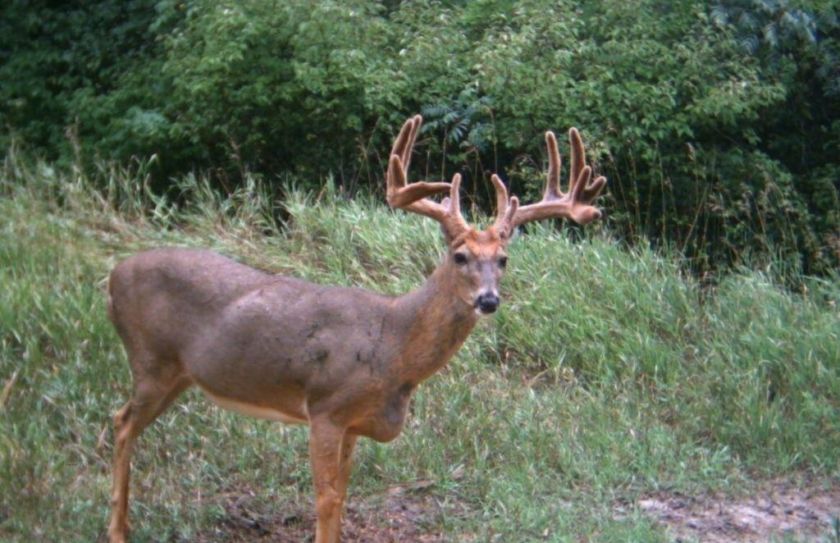During the early bow season, the hardwoods are just beginning to show the hints of their Autumn wardrobe, including shades of yellow, orange and red. For some bowhunters, the early November whitetail rut hasn't even entered their Autumn radar, while have already let the wind out of an early season archery brute.
Are you ready for some early season bowhunting success? Although not as dependable as a typical sit during the November rut, it only takes a quick look across social media outlets and hunting forums to check out an abundant supply of early season success stories. You may enjoy implementing some of the following strategies for a last minute plan of attack on an unsuspecting late summer deer herd.

Weeks of Early Season Forgiveness
I like to refer to a concept that I call a weeks of forgiveness. How long does it take for a deer herd to settle down following a hunter intrusion? Its hard to know for sure but 3-4 weeks seems to be a safe estimate. The problem is that if that intrusion is during late October, most never get the chance to hunt a relaxed deer herd again that season. Increased hunter numbers, bowhunting activities, gun season pressure, and harvested bucks all contribute to high-stressed deer herds the remainder of the season. However, if you do place some unplanned pressure on the deer herd within the first few days of the mid-September to October 1st bow openers, you are most likely outside of the amount of forgiveness it takes to allow the herd to settle back down by prime time.
Hunt the Cold Fronts
While letting the drop in temperature plan my hunts for me, instead of a particular day of the month, I have experienced a much higher level of success; my early season bowhunting stratey is no exception. The conditions for creating a 10-20 degree temperature change, will leave the deer pounding evening food sources! During the 3-hour evening sit on 9/18 in 2012, I was able to pass on 9 bucks of 4 years of age or less, most likely urged by the need to feed after the change in weather.
Bowhunting Hardwood Connections
Long, continuous movements through mature hardwoods that travel between bedding and feeding areas allow you to access a stand on the outside of that movement into a fairly deer-less stand position while deer are still feeding in the morning, or still bedded down during the afternoon. This is also a great place for a low impact, early season doe harvest while staying well away from both bedding and feeding areas. Slight changes in the topography or the habitat within an otherwise boring stand of hardwoods are great locations to focus on for stand locations.
Defined September and October Water Sources
Small water sources located between bedding and feeding in an otherwise dry bedding area and travel route, can be a key early season bowhunting movement to capitalize on! By combining an early season cold front deer to move deer early, and a deer herd that lacks water within their bedding areas or on the way to their preferred evening food sources, you can offer a very defined location to hang a stand. 100-gallon plastic cattle tanks are my personal favorite type of waterholes that can be quickly and efficiently installed. Best of all, the defined movement pattern the waterhole creates can be counted on to provide a stand location with a high predictability of scent control for specific wind patterns.
Food-Side Staging Areas
Finding a few rubs on the edge of a field during the early bow season may equal a great entrance to a preferred food source. The temptation is to set a stand right in the middle of this staging area, and this can be a big mistake. Instead, seek out areas that feature a defined transition into the field through native regeneration, sapling growth, or even a slight depressionand then hunt the edge of that transition with the appropriate wind blowing parallel to the woodline, and not into the food source itself. If it's safe I like to bowhunt behind and to the side of a staging area, while using a safe access to blow my scent into while on stand. By using the transitional cover to your advantage for an after dark stand departure, you can use an access that doesn't expose your movements to the potential of deer feeding within the food source. Protecting the food source is the #1 game within early season archery hunts.
Bedding Area Early Season Exits
Getting into an early season bowhunting evening stand as close to a bedding area as possible, without spooking the deer that are in that bedding area, is key. The closer you can get to bedded deer, the better the chance that the deer that exit will be close to your stand position. Also, mature bucks seem to have a habitat of moving just prior to dark, so waiting for them at a field edge may be a great spot to try for your first sit of the season but you may want to get closer to the bedding area for the next. Secure, brushy travel corridors that offer defined deer movement exiting the bedding area are great to focus on for a stand location, and will help to keep your stand on the downwind side of any potential deer movement. By using topography or heavy screening cover to hide your approach, it is possible to slip-in close to bedded deer if you know exactly where they are bedding.
Morning and Evening Stand Choices
A small portion of the same stand locations can be used during the morning and evening hours. However, during early season bowhunting efforts, the closer that you get to iether a bedding area or a feeding area in the morning hours, the higher the potential it is for you to spook deer. My morning sits are fewer and far between during the early archery season, for fear that I may possibly spoil a high quality evening sit. During the rut you can count on the deer to be extremely active all morning long, especially within the social hotspots of deer waterholes, staging areas and hidden food sources. However, the early season equals evening hunting, and I try never to attempt a morning bowhunt, at the potential expense of a precision, high quality evening hunt. Regardless of your stand choice though, the name of the game is to keep from spooking deer!
Conclusion
You may find that some of your existing set-ups are already in place to take advantage of a great early season sit! Keying on those late summer feeding patterns can lead you to success, and avoiding deer while entering the woods will insure the quality of your future sits. If you can find an early season bowhunting cold front while avoiding avoiding deer on the way in and out of your stand location, go for it!


